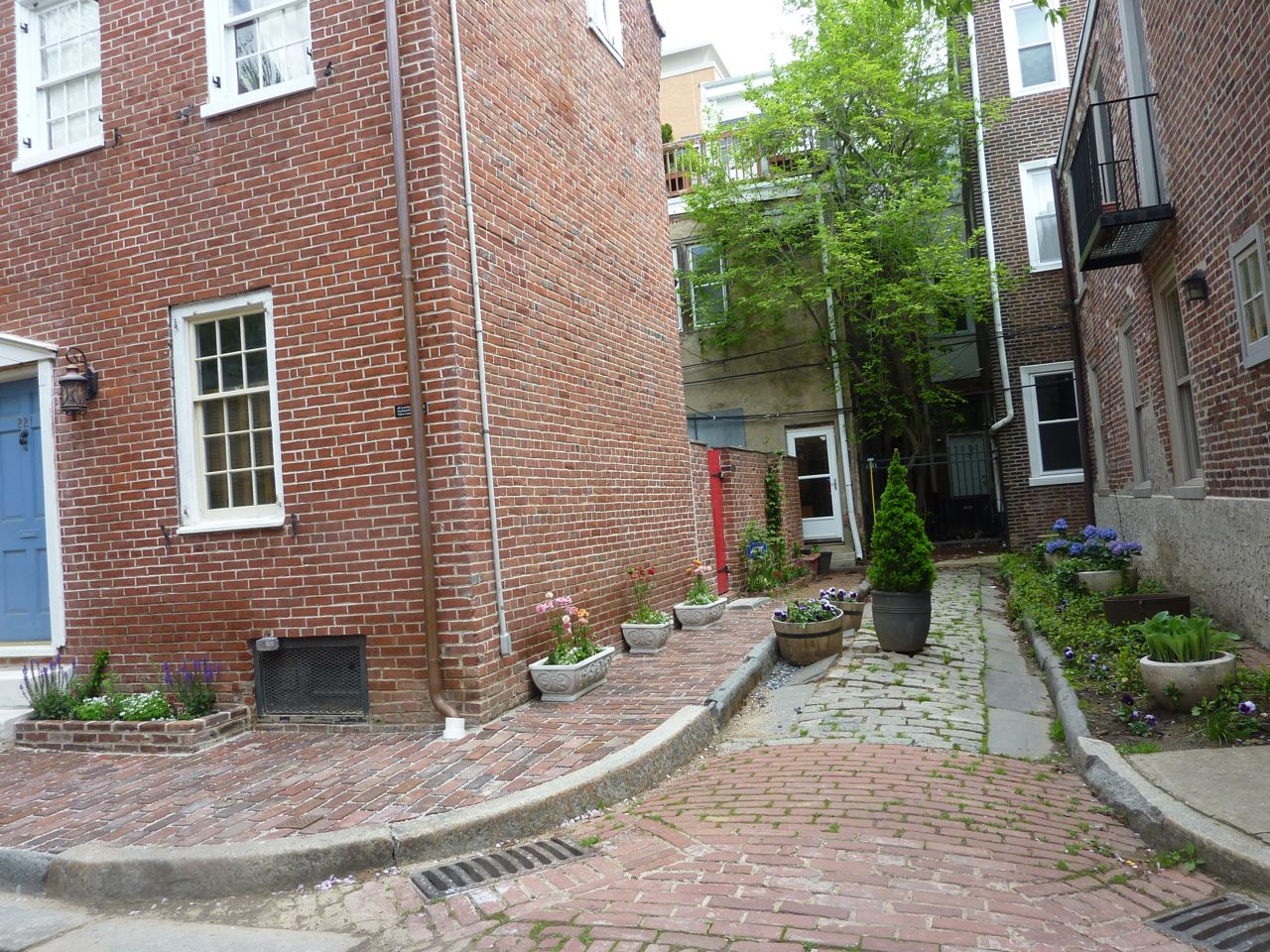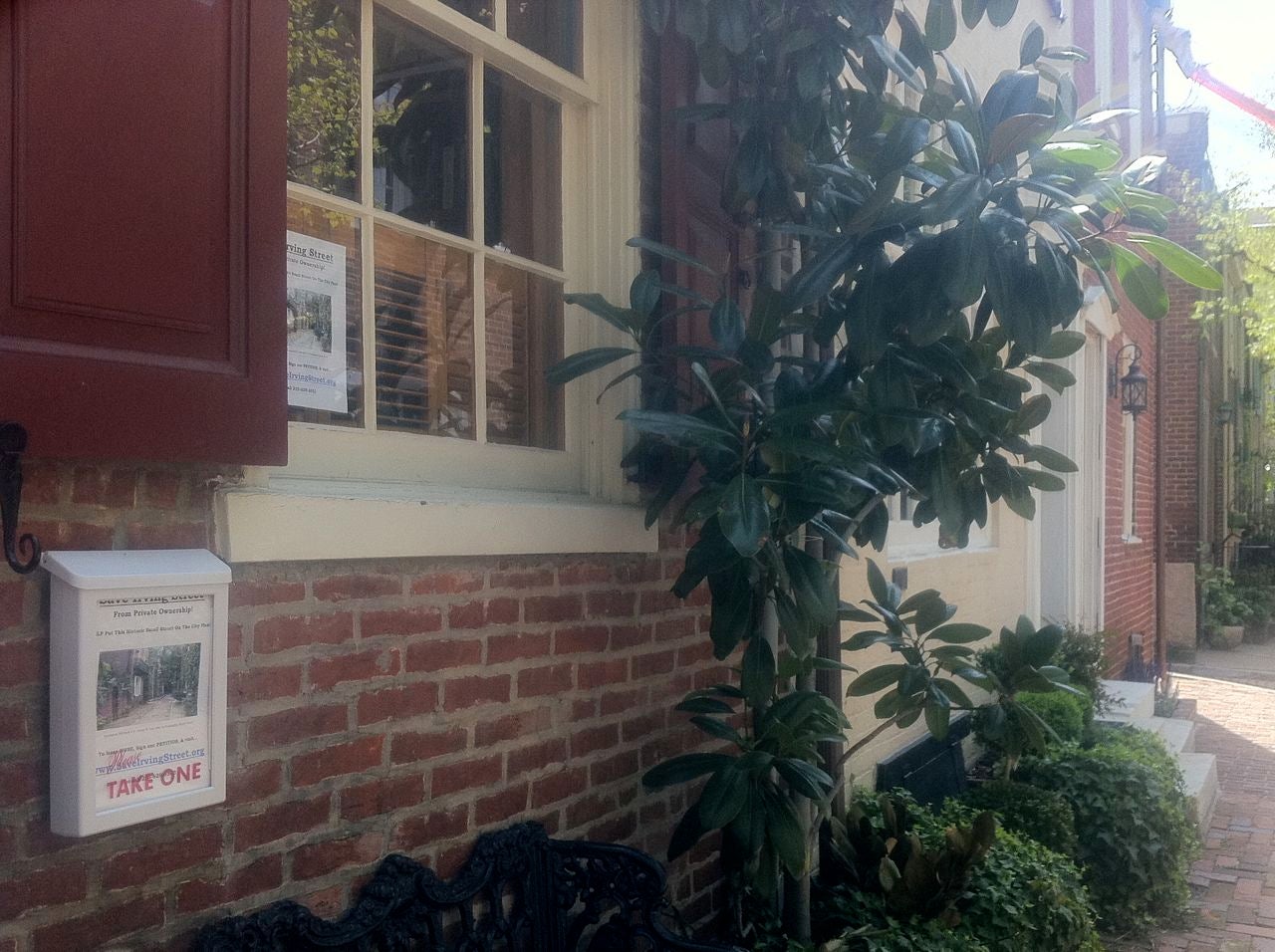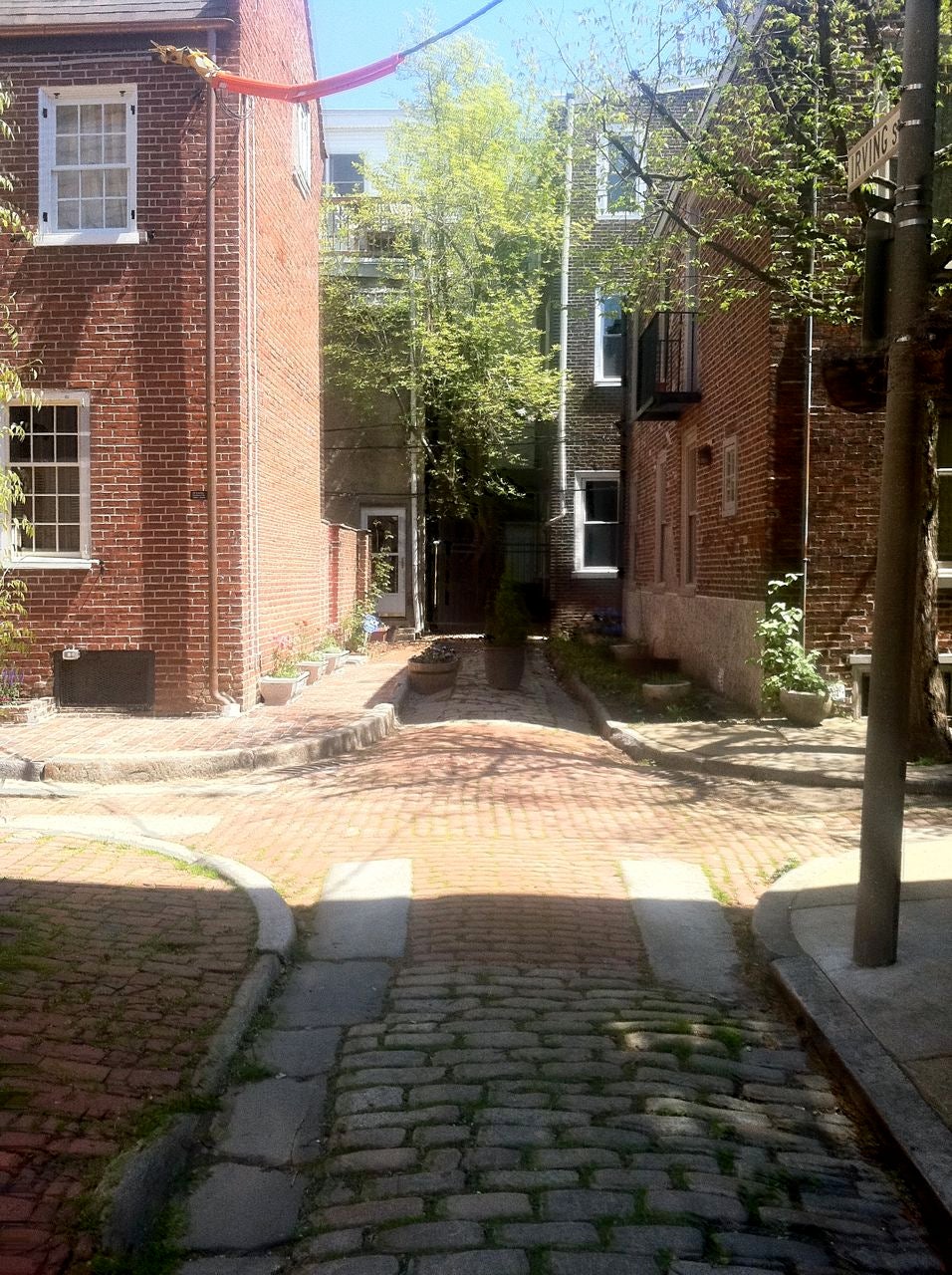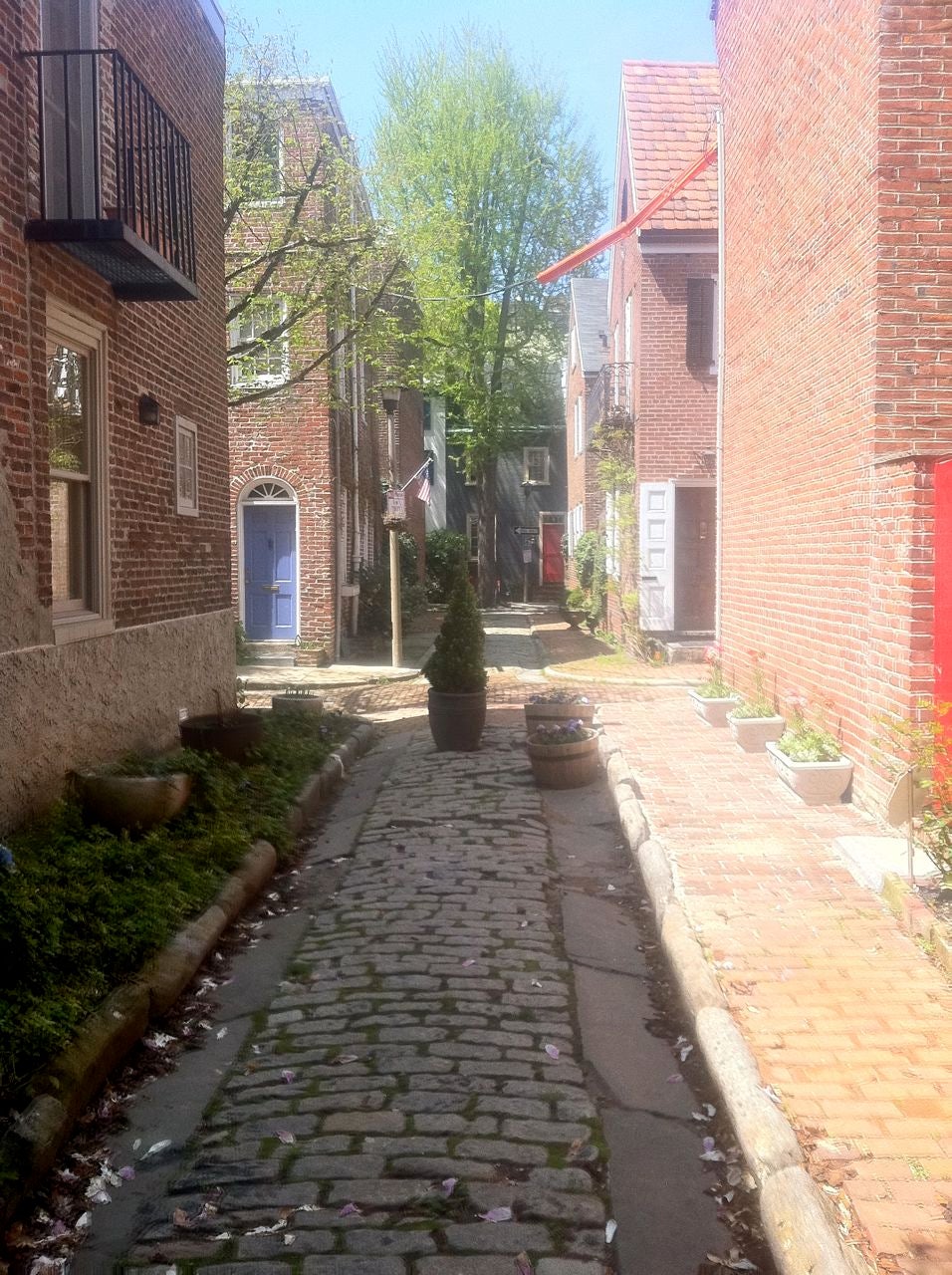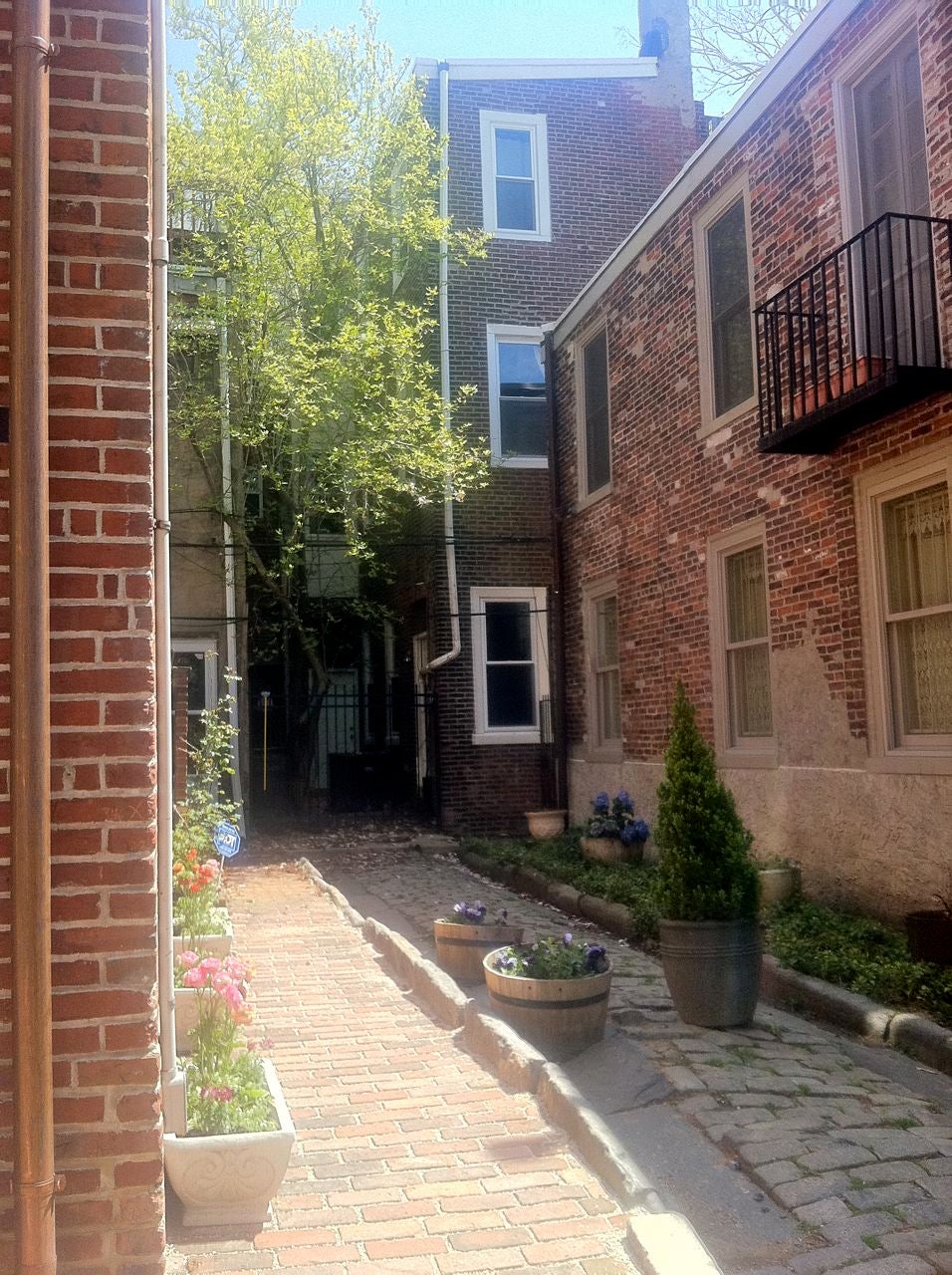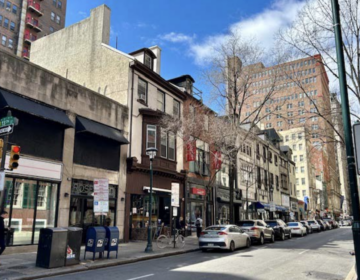On one “Little Street,” some big questions
It smacks of a classic case of he-said, she-said, but in the controversy swirling around one “Little Street” in Washington Square West, a host of Big Questions pertinent to city planning and zoning can be found.
They include: who should benefit from a street that anyone can walk down, yet doesn’t technically belong to the public? And, conversely, who should bear the burden of maintaining that street, if the city isn’t inclined to?
To put such questions to rest, the two neighbors whose corner homes turn onto either side of a “spud” of Irving Street — a tiny dead-end between 11th and 12 streets, and Locust and Spruce streets — have started investigating whether they can formalize what they say is already a given.
“This will be a technicality,” says Julie Bigas-Seda, who lives with her husband and two small children in one of the houses. “The law says that when a street has been vacated, it goes to the abutting properties.”
According to some city agencies, she’s right. “Pertinent to the Commission’s Historic Street Paving thematic district — of which this stub is part — we’ve run into a small handful of streets that don’t belong to the city,” says Jonathan Farnham, the Commission’s executive director. “It is my understanding that it’s pretty automatic in those cases that the property be divided between the abutting neighbors.”
Thomas Marro of the Streets Department’s City Plans Unit wouldn’t comment on the technical or legal aspects of ownership, but he did say that the Irving Street situation is not a unique one. “We estimate that there are between 200 and 300 of what we call ‘minor streets’,” he says. “They are not on the city plan and so have never been recognized as public property.
“We don’t really know the reason for their exclusion,” Marro continues, “But we assume when they were first creating the city plan in the mid-to late- 1800s that they had some criteria as to what would be categorized as a public street that these didn’t meet, most likely because they are very narrow and most of them are dead ends.”
When Councilman Frank DiCicco met with representatives from the Department in mid-April to make sure that the street is indeed not part of the public thoroughfare, he received confirmation that it has never been on the city map — and likely never will be. “They likened it to an alley where the other immediate neighbors retain rights,” says the Councilman’s chief of staff Mary Ann Womelsdorf. “The two abutting neighbors may need to file a corrective deed, but that’s it.”
DiCicco’s main concern at this point, adds Womelsdorf, is to ensure that all neighbors retain usage of the small street — that no gate or permanent barrier goes up, for example.
Some neighbors aren’t happy with the findings. Windows all over the neighborhood sport signs reading “Save Irving Street From Private Ownership!”
But Bigas-Seda says this is not an effort to land grab, but one to “get control of the situation so we can take proper care of the street. We have liability issues, and little children to worry about.” Tree roots have caused the street to buckle, and the sidewalk curbs are broken in pieces.
For Lynn Landes, a neighbor two doors down on Jessup Street, “there’s no advantage to taking this street private. It has always been a street used by the public.” Neighbors use the small street for access to the alley that runs behind their houses, she says, and have, in the past — before it became too torn up — held small gatherings there.
Landes and others had hoped that DiCicco might introduce an ordinance that would require that public notice be given when a neighbor seeks to take control of adjacent untitled property. “We only found about this when I came across a surveyor taking measurements,” she points out.
According to Womeldorf, however, the Councilman is “not inclined” to push for such an ordinance. “It’s a big setback,” says Landes. “I don’t think it’s a good policy: are we supposed to constantly be checking to see if our neighbors are unfairly claiming these streets?”
Landes fears that once the property is deeded over to the two houses, the owners will park there or even place moveable barriers, such as planters; both of which they’d be allowed to do, according to the Historical Commission. And while any attempt to completely block access to the street will have to be brought before the Commission and other agencies, the owners — current, or future ones — could always appeal.
Bigas-Seda takes pains to mention that her husband is a designer who works for a major urban planning firm in town and that the couple has been historically sensitive in renovating its home. “In fact, we intend to work very carefully to put everything in writing to govern against any encroachments now, or in the future,” she adds.
“We just want to take care of the property. If we have to wait for the city, it might never get done.”
Contact the reporter at jgreco@planphilly.com
WHYY is your source for fact-based, in-depth journalism and information. As a nonprofit organization, we rely on financial support from readers like you. Please give today.



